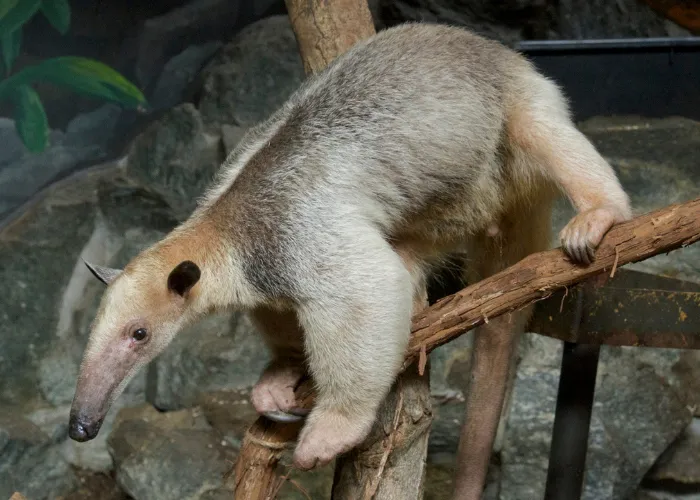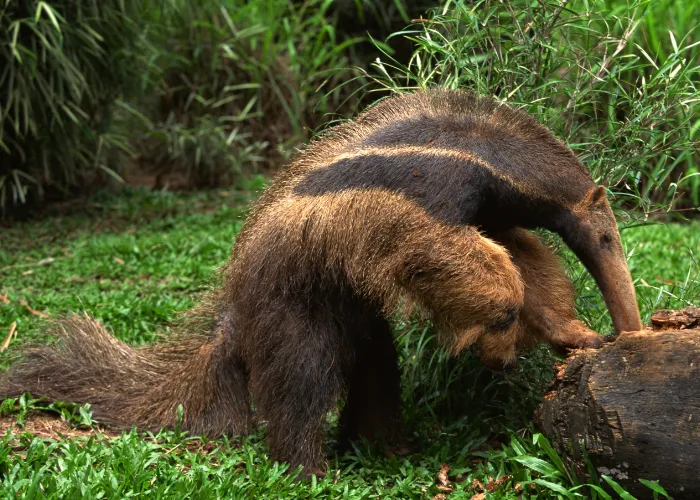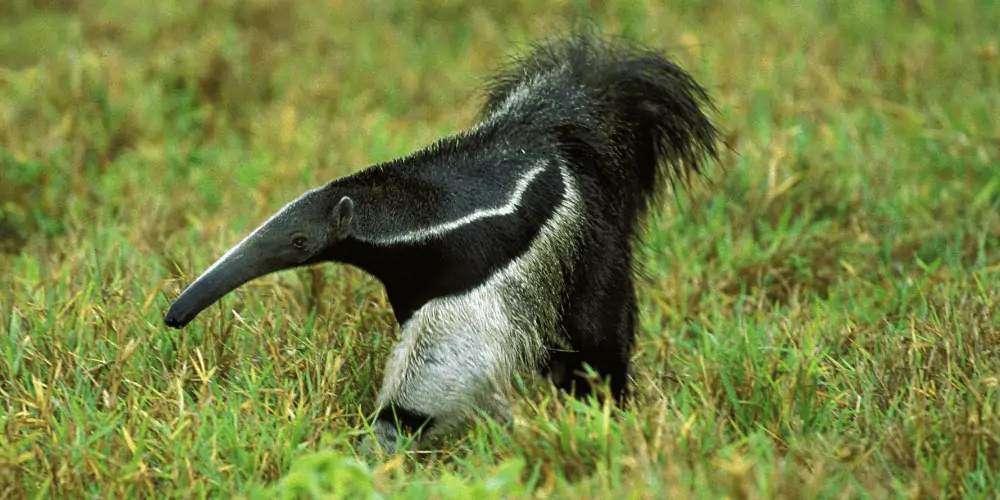Anteaters are curious-looking creatures, provoking thoughts, opinions, or emotions, but the least of these would be any fear. But are anteaters dangerous animals?
Anteaters can be dangerous when provoked to defend themselves. Their claws and surprising speed can be a lethal combination when threatened.
Though they’re not equipped with strong jaws and fearsome teeth, they have a formidable set of claws that have been known to fend off attacks from large cats in the wild successfully.
Are Anteaters Aggressive to Humans?

Anteaters are not aggressive toward humans but would be left to themselves when in the wild. They are capable of becoming aggressive if cornered or threatened.
To answer questions about anteater aggression, first, we must understand that not all anteaters are the same, and there are different breeds of anteater that all differ in size and weight.
Different Anteaters, Different Capabilities
There are four types of anteaters most commonly found in South America.
- The Northern Tamandua– The Northern Tamandua can weigh up to 30 pounds and measure up to 30 inches long.
- The Southern Tamandua– Nicknamed the “Collared Anteater,” the Southern Tamandua weighs up to 10 pounds and can stretch up to 35 inches in length.
- The Silky Anteater– Also called the “Pygmy Anteater,” the Silky Anteater is the smallest among the four major anteater types. These tiny creatures only weigh under one pound and are only about 7 inches long.
- The Giant Anteater– Unsurprisingly, due to its name, the Giant Anteater is the largest of anteaters. These can stretch between 5-7 feet long from snout to tail and weigh 100 pounds.
Even if all four were commonly aggressive (which they’re not), of the four types, the only one who harbors the capabilities of acting upon aggression would be the giant anteater.
The rest would pose no more dangerous than any other small wild animal if they were aggressive.
Can an Anteater Kill a Human?

Of the four types, the Giant Anteater would be the only one capable of killing a human.
The Northern and Southern Tamandua varieties would have to be extremely lucky in what they hit with their claws to do enough damage to kill someone, and the Silky Anteater has no more chance than a chipmunk.
Unlike predatory forms of attack that involve teeth and fangs, the leading cause of human death when performed by an anteater is blood loss, otherwise known as exsanguination.
Giant Anteaters have powerful foreclaws that grow up to four inches long and can do a considerable amount of damage to attackers.
Their defensive stance is to prop themselves upright, using their tail to assist in balancing, leaving their weapons available. Their claws can be dangerous enough to fight off their most formidable foes, such as the jaguar and the puma.
So, can an anteater kill a human?
Yes, they can.
Would they? Not under normal circumstances, mainly to save its own life.
Has An Anteater Killed Anyone?

Has anyone ever been killed by an anteater?
There have been reports that come out of South America of attacks that have resulted in human deaths.
Most recently is a report of a man hunting with his dogs who had cornered a giant anteater feeding on termites. Not being able to shoot it for fear of accidentally hitting one of his dogs, he chose to approach it with a knife instead.
The anteater latched onto his arms and caused wounds significant enough to cause the man to bleed out. It took two other men (his sons) to separate the anteater from the hunter, who passed away from his wounds shortly after.
The full story can be found in detail at the Wilderness & Environmental Medicine Society website.
Can You Have an Anteater as a Pet?

Is Owning an Anteater Legal?
Some people choose more exotic animal types for pets and may be interested in owning an anteater. Legalities vary from country to country, and you’ll have to do some digging depending on where you live.
In the United States, it has been federally legalized by the U.S. Government, but each state has unique laws that govern the legalities of animal ownership. In short, you’d have to look into the laws of the state you’re living in if you live in the United States.
Are Anteaters Good Pets?

This question doesn’t have an easy “yes or no” answer. Whether or not an anteater makes for a good pet comes down to how you define what a good pet is.
What I mean is, if you are looking for a pet that is affectionate, cute, and interesting, then any of the smaller three varieties would qualify. Giant anteaters are typically not on the radar of pet ownership.
However, if you’re looking for an animal that is easy to find, easy to feed, and easy to take care of, then an anteater makes the wrong choice of pet. Even the smallest choice can be difficult under these categories.
Finding a Vet who can treat or provide checkups on anteaters can become a challenge. Vets located in urban areas are more likely to be better versed in more exotic pets than rural countries.
Aside from their care, they tend to make mincemeat out of furniture with their claws and require daily attention and correction. So, if you work or are otherwise preoccupied throughout your everyday life, you’d have a tough time with an anteater.
So, if you have the time patience and are willing to shell out potentially thousands of dollars for an anteater who has been bred from domesticated parents, they may fall under the “good pet” category.
Final Thoughts

In the grand scheme of things, anteaters are no more or less dangerous than other animals.
All animals, even unassuming animals, can be dangerous depending on the conditions. (A strange story of a man passing away from a woodchuck bite comes to mind.)
Anteaters are much less dangerous than many of the pets we already adore. Dogs, for example, have a far worse track record when it comes to human deaths (worse by a landslide in comparison), yet they are the most popular choice of pet to have worldwide.
Should you own one as a pet?
Be as honest with yourself as possible to answer this question because fooling yourself may end in many problems for you or the anteater.
RELATED ARTICLE: Do Anteaters Lay Eggs?



